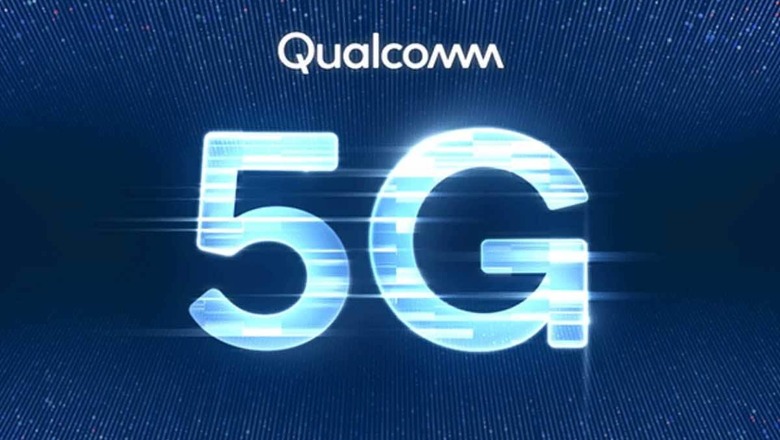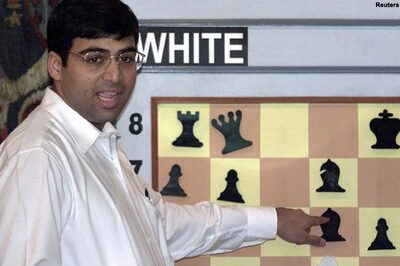
views
Today, wireless technologies are advancing at a pace that’s, in many cases, faster than their adoption. Use cases are developed, services are launched, and applications are built, in a much larger and impactful magnitude, once the technology is made available. Each new technology brings, in its wake, a wave of transformation that sweeps over the personal, professional, social and economic aspects of human life. The India we see today is unrecognizable from that which existed 25 years ago, in terms of both implementation of technologies and its influence on lifestyles. The present generation of children find it hard to imagine a life without digital devices. The future generations will grow in a world powered by technologies such as IoT (Internet of Things) and 5G. They could be forgiven for taking technology for granted and believing that things are meant to happen at the touch of a finger.
But, those of us who have watched technology evolve over the past few decades are in a better position to reflect on and appreciate the transformative benefits that technology has yielded. The internet existed as an interconnected network for years before it was made available to citizens, in the mid-90s. India embraced the future in August 1995, with the launch of internet services by VSNL and the completion of the first mobile phone call in the country. It took almost a decade, however, for internet and cellular services to intertwine. Their growth though was impaired by issues related to connectivity, device cost and availability.
The evolution of cellular technology from voice-based to data-enabled
In the liberalised Indian economy, private telecom operators introduced cellular services for the first time, and India encouraged the growth of internet penetration by relaxing import duties on essential equipment to boost connectivity and device availability. Voice calls became much more affordable for Indian consumers following the launch of CDMA2000 services by Reliance Infocomm Ltd, in 2002. They enabled affordability of devices and tariffs, which set the stage for nationwide mobility and connectivity.
Both CDMA and GSM technologies evolved in subsequent years, improving steadily in terms of voice quality and data capabilities. Over time, their paths converged onto the CDMA platform, after which they dropped their base identities and came to be referred simply by the nomenclature “3G”. Meanwhile, the roll-out of BharatNet in 2011 made Wi-Fi available through 700,000 hotspots across the nation on the back of a dedicated optical fibre network. This helped in bringing millions of citizens to the fold of the internet.
Fast-forward to today, the roll-out of 4G, VoLTE and VoWiFi services over the past five years has rapidly transformed the meaning of connectivity in India. Today, most of the leading telecom operators offer voice services for free and data tariffs that are the most economical in the world.
An era when technology evolution and consumer trends drive each other
As Indian consumers gained access to faster and more affordable data, live TV and entertainment through music and movie streaming became a favourite pastime on smartphones. Over-the-top (OTT) content and professional freelancing services became viable opportunities and created new industries that have fuelled the app market and gig economy. Most recently, online learning has started growing in popularity.
Data has become so commoditized that consumers now rely on data even for voice calls to compensate for patchy networks. Packet-switching has overtaken circuit-switching, almost forcing telcos to pull the plug on 2G networks. Smartphone buying decisions today are determined by aspects such as display, camera, data speeds and device performance, because of the heightened appetite for intensive gaming, entertainment, and long hours of streaming.
This, in turn, has influenced smartphone design, and faster and more power efficient processors are emerging as a critical need in the industry.
Emergence of a new economy, industry, and services
We have seen how location-based services have transformed the public transport, especially ride hailing services over the years. In addition, eCommerce businesses have flourished and have leveraged technology to either overhaul or upgrade their supply chains for better delivery services and real-time monitoring of delivery of goods. Four years ago, India witnessed a sudden shift towards digital payment platforms after the demonetisation exercise. Just in a few weeks, millions of Indian consumers and businesses adopted digital payments and payment interfaces such as UPI that turned smartphones into payment gateway. The banking systems in the country went into a technology overdrive with smartphones at the centre of the ecosystem.
More recently, emergency healthcare workers and teachers have had to adapt to significant changes owing to the Covid-19 lockdown. Last-mile internet connectivity has helped them tremendously in going about their work. Technologies such as GPS, Bluetooth, Wi-Fi, and real-time data crunching using Artificial Intelligence and Machine Learning have enabled real-time reporting and contact-tracing, which have helped ensure citizen safety. Meanwhile, students are learning online and professionals are working remotely.
What demonetisation did to the banking system, the pandemic has done for all industries – bring about digital transformation.
A promising future with 5G
India is one of the world’s largest internet markets. After 4G, it is looking to take connectivity beyond people, with IoT. The introduction of 5G will enable a wide range of services for the convenience of citizens and the upscaling of infrastructure across key industries. With 5G pricing per bit of data delivered is expected to much lower as compared to the existing 4G and 3G networks. This will support, catering of the larger bandwidth demand of consumers as existing or lower costs. 5G will help deliver last-mile connectivity in regions that are inaccessible for deployment of fibre network, offering a solution to this complex problem of fibre rollout.
In addition to offering faster data connections to consumers, 5G is a platform for new business models to thrive. It opens the market for smarter homes, efficient public utilities and Industry 4.0. The new 5G standard (5G New Radio) takes connectivity from people-to-people and people-to-information and turns it into a unified connectivity fabric. This presents attractive opportunities, especially in sectors such as manufacturing, healthcare and education – opportunities for reviving the economy and building a stronger, resilient, aatmanirbhar India on the strength of smart distributed manufacturing and robust digital healthcare infrastructure. India embraced the future in 1995 by going online. Now it has the opportunity to shape the future yet again with 5G.
Editors' Note: This article is part of the 25 Years of Internet In India series, where we try to capture how the state of mobiles, home broadband, services and content have evolved, particularly in the past few years. We try to understand what the internet means for us, be it for the new reality of work from home, for entertainment and the Netflix binge watching, music streaming, online gaming and more. With the Industry Dialogue being a multi-part series by News18.com, the industry talks about the impact of digitisation, the adoption of technology by the masses, the proliferation of smartphones and the wider demographic going online, and what that means for India going forward.

















Comments
0 comment